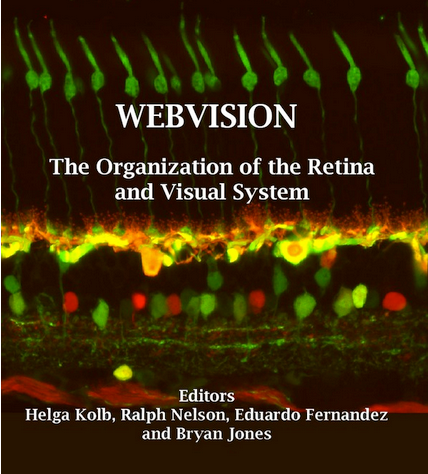When Bryan W. Jones, PhD, joined the Department of Ophthalmology at the University of Pittsburgh this year, he brought with him Webvision, the world’s first online textbook about the retina.
Webvision was originally started by Helga Kolb, PhD. “She is one of the gods of vision science,” Dr. Jones said, and one of the first people to do ultra structural analysis and reconstruct neuronal circuits of the retina at the electron microscopy level. Dr. Kolb was awarded the Proctor Medal from the Association for Research in Vision and Ophthalmology (ARVO) for her retinal research work in 1993.
At the time, textbooks were large and expensive, so Dr. Kolb decided that the retina community should create an online textbook. It was the early days of the Internet, and Dr. Kolb used her award money to hire a programmer, Trish Goede, to write the hand-coded HTML. It was up and running by 1995. Four years later, the Internet was rapidly changing, and the “old” HTML code was starting to fail, so Dr. Kolb asked Dr. Jones for help.
He moved Webvision from the Silicon Graphics Indigo workstation it was on to a Macintosh, where he cleaned up all the HTML. He has been running it as Webmaster and editor since then. Dr. Jones called Webvision a labor of love. He bought all the computers it has run on in recent years, and it has been an entirely volunteer effort.
The textbook is updated regularly – by supplementing or replacing chapters – and has grown a lot in the last 25 years. Initially, there were just a few basic chapters. Now there are chapters on color, perception, and psychophysics. Webvision is an internationally recognized source of retinal information and Dr. Jones likes to solicit chapters from young talent in the science field to help grow their careers.
The audience is comprised of graduate students, but also medical students, principal investigators, clinicians, and anyone who searches Google that wants information on how the retina works.
In fact, Dr. Jones has noticed that at every vision meeting or conference he has attended in the last 20-30 years, someone has used content from Webvision in their presentation. “[Webvision] is big for the vision research field,” he said.
